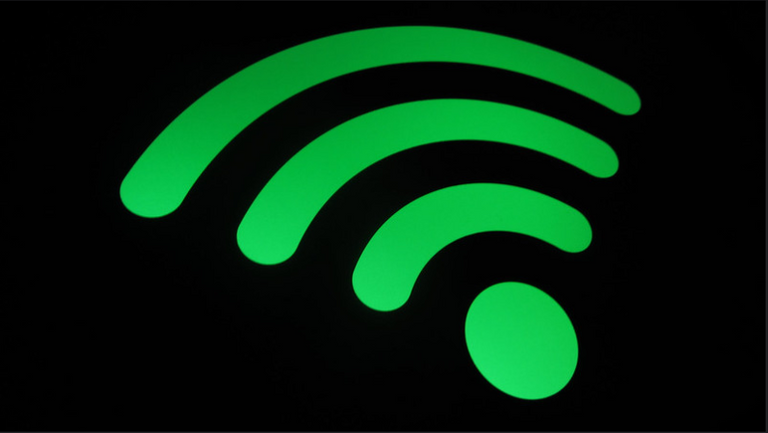Wireless Fidelity Simplified
Connecting to the internet is increasingly important. At some point in every one of our daily activities, we would need our devices to interface with the internet to enable us to work, send messages, and communicate. If you've been to a public place recently, say, an airport, a restaurant, a coffee shop or lounge, even a hotel or a library, chances are you've walked right into an environment where wireless connection to the internet is available.

Wireless Fidelity often called Wi-Fi is commonplace in our world today. Both individuals and organizations have a great need for Wi-Fi. Many individuals employ wireless networks for an internet connection to achieve different aims. The technology is rapidly spreading in different parts of the globe as some countries and states seek to employ wireless networks in their nation to provide free or low-cost internet access to residents.
Do you sometimes let the thoughts of how Wi-Fi works run through your mind? Lacking the knowledge of how certain things work can leave you puzzled. The technology behind wireless fidelity is the reason you can stream online videos for hours, connect seamlessly to the internet or have an email pop up on your smartphone real quickly.
What Is Wireless Fidelity?
Generally, Wireless Fidelity is considered the same thing as Wireless Local Area Network WLAN. Wi-Fi is a kind of networking technology that enables electronic devices such as desktops and laptops, mobile devices including smart wearables, and any other equipment that needs an internet connection, to interface with the internet with no wires connected. Simply put, Wi-Fi allows the devices to share information with one another, building a network.
It is not uncommon to see individuals call a pocket-sized device Wi-Fi. It is just like calling your phone "communication" just because you use it to communicate. Wi-Fi ensures internet connectivity through a wireless router that enables devices to connect to the internet. Just like every other wireless device you can think of, wireless fidelity is powered by radio frequencies and this is the sole reason it is able to send signals across several devices. They all work off of the same principle.
How Does Wireless Fidelity Work?
The wireless network utilizes radio waves to function the same way the portable radio, televisions, and cell phones work. The way communication works in a wireless network is somewhat straightforward, a lot like a two-way radio communication. It works like this: a device's wireless adapter interprets data into radio signals and sends it across using an antenna. A wireless router gets the translated signals and sends them to the internet via a real word Ethernet connection after analyzing it.
This pattern can also work in reverse. The wireless router receives data directly from the internet, translates it into radio signals, and transmits it to the wireless adapter of the devices.
Types Of Wireless Technologies
Wireless technologies are of four different types and series. They include:
802.11a
802.11a is a series of wireless technology that has been around for a while now. This type of wireless technology defines the configuration and layout of the radio signals translated and transmitted by Wi-Fi networking routers and antennas. 802.11a delivers definitions for wireless ATM systems and is commonly utilized in access hubs. Wireless networks employing 802.11a operate ad radio frequencies varying between 5.725GHz and 5.850 GHz. Data speed can be as high as 54 Mbps.
802.11b
This series of wireless technology is specially employed in homes and basic appliances because it costs less and has a good signal range. 802.11b was developed by the Institute of Electrical and Electronics Engineers (IEEE) over two decades ago alongside 802.11a. The 802.11b standard gives a wireless range of circa 35 meters indoors and 140 meters outdoors. It favors a transfer rate up to 11Mbps or 1.375 megabytes in one second.
802.11g
This series of wireless technology became a thing in the early 2000s. It came off as a support for the existing 802.11a and 802.11band is considered the best in its range. It works perfectly on a 2.4GHz bandwidth and facilitates data transfer rates up to 54Mbps. It is quick to access at a considerably matchless speed.
802.11n
The 802.11n is the latest type of wireless technology specifically developed to improve on the previous series – 802.11g. It supports about 100Mpbs bandwidth and improved signal vigor, and this is made possible with the use of numerous wireless signals and antennas.
Why Does Wi-Fi Matter?
It's been over two decades since the inception of the revolutionary technology and it is becoming clear that it will be an important aspect of technology for many years. The technology is seeing massive success and adoption rate growing at an interestingly exponential pace. Asides from backing connectivity within short distances, the technology behind Wi-Fi seeks to create interoperability certifications for novel Wi-Fi 6 products that work over the currently launched 6 GHz frequency band.
With that being said, wireless technology will never be in a position of negligible importance. Developers are steadily exploring the prospects of enhancing internet connections and launching several upgrades to improve speed, reduce congestion and traffic, aid interoperability, and design innovative devices that will facilitate seamless networking connectivity to a local area network or the internet.
The technology giving wireless fidelity a boost is rapidly hitting new milestones and overtaking and flipping over wired technologies. The traffic for wireless and mobile devices as of 2020 was accounted for two-thirds of all IP traffic, with an estimated number of 20.4 billion Internet of Things (IoT) devices fully connected to the network.

The future of wireless connectivity is promising for the world of wireless communication. With over 50,000 different types of Wi-Fi products and more to be developed, all with the capacity to give wireless communication a boost, the technology is progressing impressively as network vendors work to improve wireless networks.
In a few years, wireless technology will be more ubiquitous on thousands of millions of different devices, completely displacing and diminishing the need for wired technology.
References
- https://www.cisco.com/c/en/us/products/wireless/what-is-wifi.html#~q-a
- https://www.elprocus.co,m/how-does-wifi-technology-work/
- https://www.sciencedirect.com/topics/computer-science/wireless-fidelity
- https://www.geeksforgeeks.org/what-is-wi-fiwireless-fidelity/amp/
- https://www.semiconductorstore.com/blog/2014/WiFi-standards-802-11a-b-g-n-vs-802-11ac-Which-is-Best/806/
I do this on a daily basis, so I am guilty I guess.
I never knew about this, so thank you for bringing it up. I have always assumed it is the wizardry that goes into WIFI...lol
You know we are grateful for this invention because we can comfortably tap into someone's hotspot with or without permission. And still, have access to the internet. This is was a life-changing development and the adoption will continue to increase as long as nothing more sufficient replaces it.
Wifi has intelligently replaced our broadband width(MODEM) and these days, we find it easier to work with WIFI than our MODEM because our phones can be active at the same time.
It is great to know that these as been taken into consideration. And I agree that WIFI will never be in a position of negligence just yet.
We will all be here to use it to the maximum, and ensure that everyone adopts this development for as long as they put in the effort to make it better over time.
Congratulations @ummar! You have completed the following achievement on the Hive blockchain and have been rewarded with new badge(s) :
Your next target is to reach 2000 upvotes.
You can view your badges on your board and compare yourself to others in the Ranking
If you no longer want to receive notifications, reply to this comment with the word
STOPCheck out the last post from @hivebuzz:
Support the HiveBuzz project. Vote for our proposal!
Thanks for your contribution to the STEMsocial community. Feel free to join us on discord to get to know the rest of us!
Please consider supporting our funding proposal, approving our witness (@stem.witness) or delegating to the @stemsocial account (for some ROI).
Please consider using the STEMsocial app app and including @stemsocial as a beneficiary to get a stronger support.
I learnt that its called wireless fidelity.
Great post
I winder why the 802.11a was faster in data transfer that 802.11b in data transfer though. I guess it 802.11b was for home use